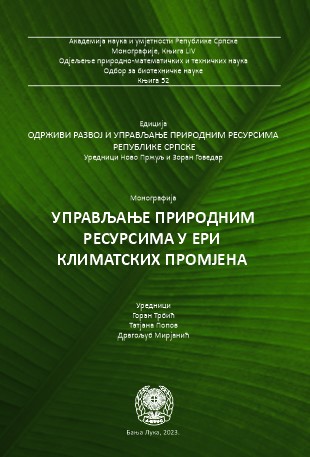Solar Energy and Climate Change
DOI:
https://doi.org/10.7251/EORU2308041МKeywords:
Solar energy, climate change, photothermal, photovoltaic, hybrid and passive solar radiation conversionAbstract
Modern solar energy is based on photothermal, photovoltaic and hybrid solar radiation conversion and passive capture of solar radiation. Photothermal conversion of solar radiation takes place in low-temperature, medium-temperature, and high-temperature photoconversion systems. Flat collectors with water and air are used for low-temperature conversion of solar radiation. Solar concentrators are used for medium-temperature conversion of solar radiation. Concentrators with heliostatic fields and parabolic reflectors of solar radiation are used for hightemperature conversion of solar radiation. Solar cells made of different materials are utilized for the photovoltaic conversion of solar radiation. Stand-alone and photovoltaic systems connected to the electricity distribution network are used to supply consumers with electricity. Fixed tilt, single or dual-axis tracking solar power plants are designed with the aim to generate a larger amount of electricity. Hybrid solar collectors are used for the simultaneous conversion of solar radiation into heat and electricity. For passive capture of solar radiation, individual residential and other buildings are used, which are built in accordance with the principles of solar architecture. Solar energy uses mainly environment-friendly materials, except toxic As and Cd in GaAs and CdTe solar cells. Devices used in solar energy do not emit harmful substances and do not have an adversary impact on climate change.
